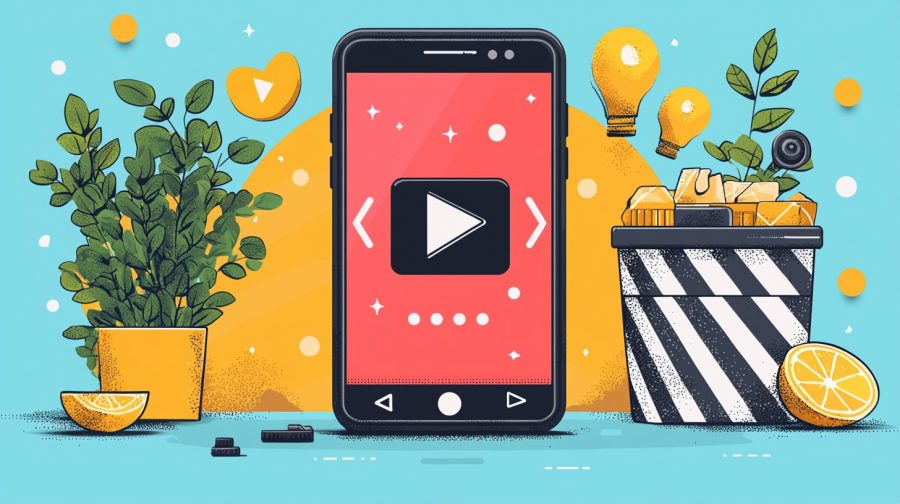The demand for instant access to video content has never been higher, making streaming technology an indispensable part of our digital lives. There are many ways to watch your favorite movies or anticipated new releases. Whether by downloading from sites like filmizlenet.to or streaming them online through various applications.
Streaming technology powers every video you watch online. A media streaming app lets people access video content remotely without downloading it, or attend live events. It’s the internet’s answer to TV broadcasting, but far more accessible. Businesses can significantly engage audiences by developing a media streaming app. This article covers key concepts for building a custom streaming application. Let’s dive in!
What is a streaming app?
A streaming app includes the software and hardware that transmit video content to viewers, including live streaming. Video data is inherently large, requiring dedicated technology and devices.
A typical streaming application includes:
- Video encoders: To compress large files.
- Video transcoders: For multi-bitrate and adaptive bitrate streaming.
- A Content Delivery Network (CDN): A geographically distributed network of servers for efficient content delivery.
- HTML5 video player: The most top video player.
Video streaming has endless uses: virtual events, online education, sports, concerts, and government meetings. Marketing and sales teams use it for pitches, product demos, and explanatory videos. The health sector also benefits from live streaming for remote patient monitoring.
Steps involved in streaming app development
Creating a streaming app requires careful planning and execution. Here are the key steps to guide the development process, ensuring a seamless user experience and robust functionality.

Step 1: Find your niche
With many live video streaming platforms available, competition is fierce. Before building a new app, it’s crucial to research your market segment and competitor offerings. For example, look at platforms like https://filmizlenet.to/ to see what they offer and where the gaps are. Don’t build based on assumptions; interview potential users to understand their specific challenges and how your application can solve them.
Step 2: Pick a monetization strategy
The best plan considers user needs. The three most popular monetization models are:
- Paid app: Customers pay a one-time fee to download.
- Subscriptions: Users pay a monthly fee for service access.
- Selling advertising space: The app is free but includes ads, which can sometimes hinder user experience.
Many apps combine monetization models, so you don’t have to pick just one. For more ideas and pricing strategies, explore articles on SaaS pricing models (which can apply to live streaming apps) and building apps like Twitch.
Step 3: Pick a suitable team
You can assemble an in-house team, hiring backend and frontend developers, business analysts, UX experts, and graphic designers. Alternatively, you can outsource your video streaming app development to an external company with the right expertise.
Video streaming app development isn’t overly complicated, but it does require specific knowledge and experience. Choose a partner with extensive experience in the third-party solutions you plan to use. If you want to host your app on AWS, partner with an experienced team.
Once you choose the right partner, they can assist with the following points.
Step 4: Pick the right tech stack
Beyond programming languages, video streaming app development requires components like:
- Media processing platform: (e.g., AWS Elemental Media Convert).
- Server / compute layer: (e.g., Amazon EC2, Amazon EKS / AWS Lambda).
- Storage: (e.g., Amazon S3).
- Streaming protocols: (e.g., RTMP, M2TS, Apple HTTP Live Streaming, WebRTC, RTP/RTSP).
- Database providers: (e.g., Amazon RDS, Amazon DynamoDB).
- Push notifications.
- Messaging queues: (e.g., Amazon SQS).
- Managed live streaming: (e.g., Amazon IVS, AWS Elemental MediaLive, DaCast, Wowza).
- Managed chat for streaming: (e.g., Amazon IVS).

These technologies must be selected and optimized for good performance, even with low internet speeds or limited online access.
Step 5: Understand legal requirements
You must comply with various legal regulations based on where your application will be available. Since users register and you store personal data, compliance with data protection regulations like GDPR or CCPA is essential.
Step 6: Work on the UX/UI
Live streaming app design is as crucial as the tech stack and legal compliance. In this highly competitive market, impeccable UX/UI design can make your app stand out. Live streaming apps must be easy to use, allowing users to focus on content consumption rather than struggling with the app’s functionality.
Step 7: Think about features that will add a competitive edge
Regardless of the live streaming app type you build, consider how it will stand out from competitors. Today’s users prefer applications that offer concrete personalization options, such as curated content, meaningful recommendations, and updates about new videos they might find interesting.




